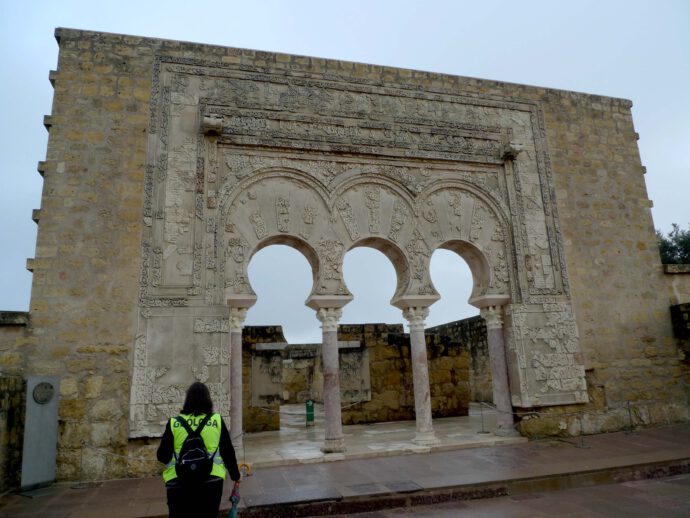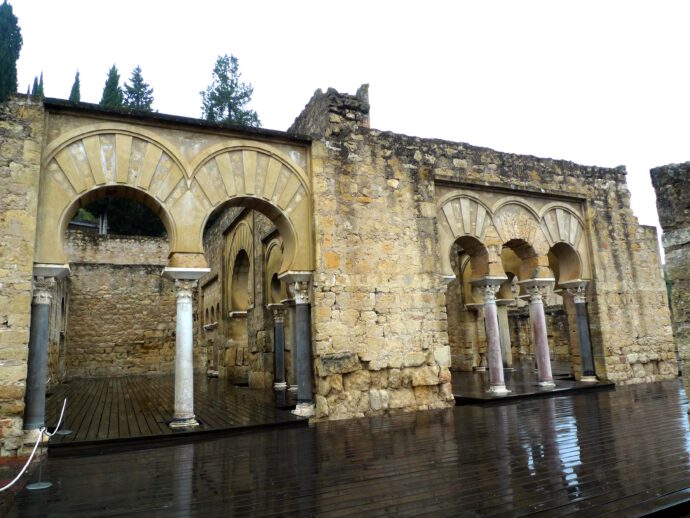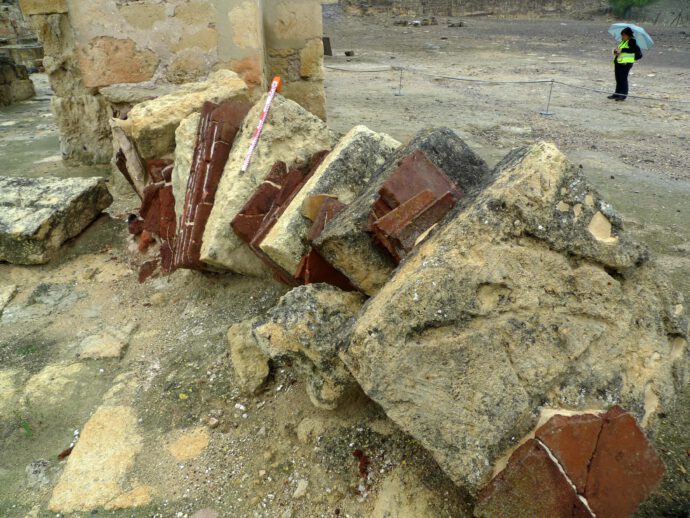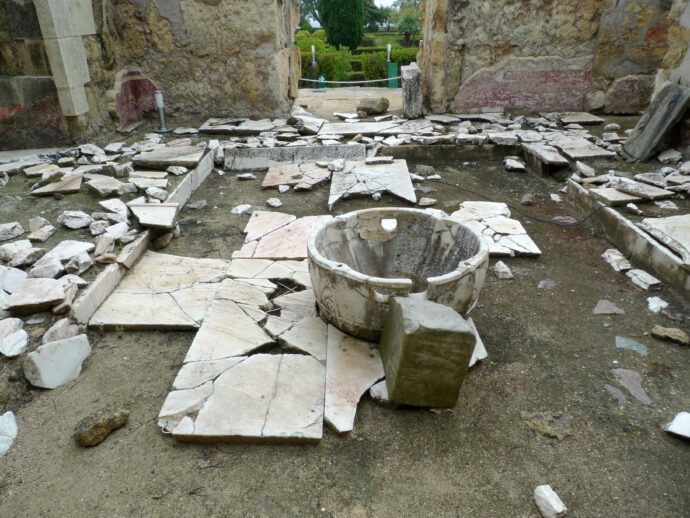The UNESCO World Heritage site “Caliphal City of Medina Azahara” in southern Spain was built in the 10th Century by the first Caliph of al-Andalus, Abd al-Rahman III. The destruction and consequent abandonment of the city were thought to result from a civil war between 1009/10 AD. In a new paper, Rodríguez Pascua et al. investigate the role of an earthquake in the sudden abandonment and ruin of the city. They identified eleven types of Earthquake Archaeological Effects (EAEs), including dropped key stones in arches, tilted walls, conjugated fractures in brick-made walls, conjugated fractures and folds in regular pavements, and dipping broken corners in columns. More than 150 structural measurements imply mean ground motion direction of N140°–160° E. This indicates oriented damage to the buildings. From recent events such as the Lorca Earthquake we know that this pattern can be caused by earthquakes. The authors conclude that probably two strong earthquakes with intensities ≥VIII MSK/EMS occurred in the 11th and 12th centuries AD.
The paper is open access and available here:
Rodríguez-Pascua, M. Á., Perucha, M. Á., Silva, P. G., Montejo Córdoba, A.,J., Giner-Robles, J.,L., Élez, J., Bardají, T., Roquero, E., & Sánchez-Sánchez, Y. (2023). Archaeoseismological Evidence of Seismic Damage at Medina Azahara (Córdoba, Spain) from the Early 11th Century. Appl. Sci., 13, 1601. https://doi.org/10.3390/app13031601
Miguel provided some impressions from the field work within the archaeological site:








No Comments
No comments yet.